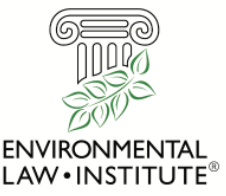Resources
Learn More About Bioengineered Products
The Unified Website for Biotechnology Regulation
- The three primary agencies with responsibilities for regulation of biotechnology products are the U.S. Environmental Protection Agency (EPA), U.S. Food and Drug Administration (FDA), and U.S. Department of Agriculture (USDA). These agencies aim to cover the full range of plants, animals and microorganisms derived from biotechnology in an integrated and coordinated manner. Each agency has regulatory programs to achieve the health and environmental protection goals derived from their own statutory authorities. The regulatory framework is based on laws governing the regulation of products and their uses. In providing oversight, the agencies employ a rational, scientific evaluation of products. Each agency has developed its own agency-specific regulations or policy documents to establish its regulatory approach to biotechnology products.
Agencies
-
USDA - Biotechnology Regulatory Services
- To protect plant health, Biotechnology Regulatory Services (BRS) implements Animal and Plant Health Inspection Service (APHIS) regulations for certain organisms developed using genetic engineering that may pose a risk to plant health. Similarly, under the Animal Health Protection Act (AHPA) and the Plant Protection Act (PPA), USDA regulates products of biotechnology that may pose a risk to agricultural plant and animal health. Finally, under the VirusSerum-Toxin Act (VSTA), USDA has regulatory oversight over products of biotechnology that are included in veterinary biologics, and ensures that veterinary biologics are pure, safe, potent and effective.
-
EPA - Regulation of Biotechnology under TSCA and FIFRA
- Under the Toxic Substances Control Act (TSCA), EPA regulates the use of intergeneric microorganisms in commerce or commercial research. EPA considers intergeneric microorganisms to be those formed from organisms in different genera (genera is the plural of genus, which is a level in a taxonomic classification system based on the relatedness of organisms) or those microorganisms formed with synthetic DNA not from the same genus.
- The Federal Insecticide, Fungicide and Rodenticide Act (FIFRA) provides the legal requirements for EPA's registration process for all pesticides. With regard to biotechnology, EPA's jurisdiction under FIFRA covers regulation of the new substance and DNA in the plant when it is pesticidal in nature.
-
FDA - Biotechnology Guidance Documents & Regulatory Information & Biotechnology Guidances
- The FDA is responsible for protection and promotion of public health. It regulates under laws including the Food, Drug, and Cosmetic Act (FFDCA), and the Public Health Service Act (PHS), which together, among other things, govern the safety of most foods for humans and animals, including those produced using biotechnology; the safety and effectiveness of intentional genomic alterations in animals produced using biotechnology; and the safety and effectiveness of human and animal drugs and the safety, purity and potency of human biologics, including drugs and human biologics from plants and animals produced using biotechnology.

